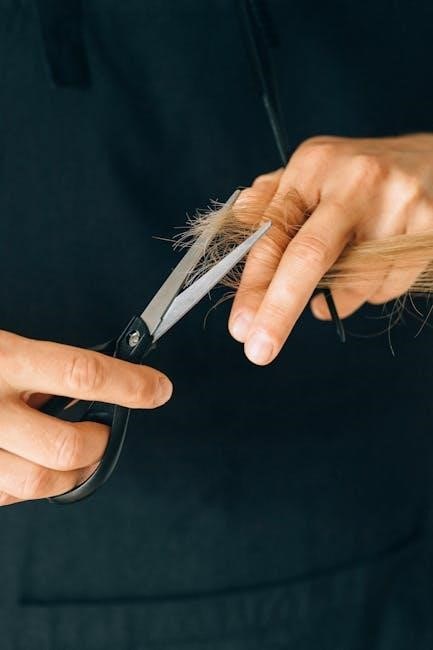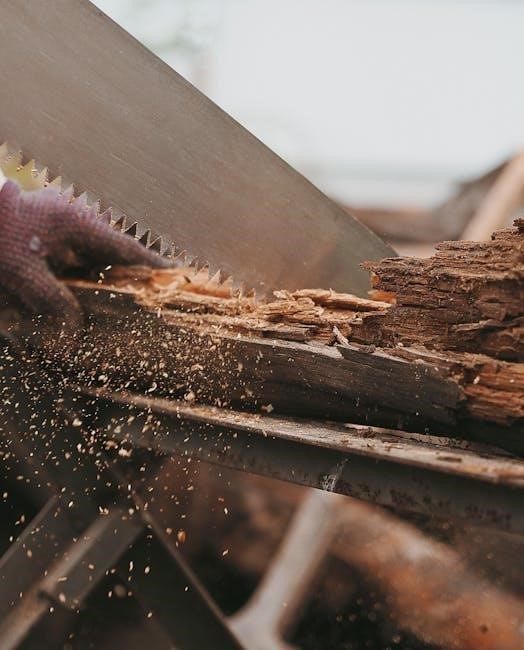Echo SRM-210 Manual: A Comprehensive Guide
This guide serves as a comprehensive resource for Echo SRM-210 Grass Trimmer/Brush Cutter users. It provides essential information for safe and efficient operation. By following the instructions and safety guidelines outlined, users can maximize the tool’s performance, longevity, and on-the-job dependability.
The Echo SRM-210 is a versatile grass trimmer and brush cutter designed for both residential and light commercial use. Known for its reliable performance and ease of use, this tool is a popular choice for maintaining lawns, gardens, and other outdoor areas. This section introduces the SRM-210, highlighting its key features and benefits.
The SRM-210 is equipped with a 21.2cc engine, providing ample power for tackling various trimming and cutting tasks. Its lightweight design ensures comfortable handling, reducing user fatigue during extended periods of operation. The trimmer also features a user-friendly interface, making it accessible to both experienced users and those new to outdoor power equipment.
This tool is designed for long life and dependability, offering a cost-effective solution for maintaining your property. Understanding the SRM-210’s capabilities and limitations is crucial for safe and effective use. This manual aims to provide the information you need to operate and maintain your SRM-210, ensuring optimal performance and longevity. Always consult the safety guidelines before operating the tool.

Safety Precautions
Operating the Echo SRM-210 requires strict adherence to safety guidelines to prevent serious injury. Before using the trimmer, carefully read and understand all safety precautions outlined in this manual and any accompanying safety materials. Personal Protective Equipment (PPE) is crucial; always wear eye protection, hearing protection, sturdy footwear, and appropriate clothing to minimize the risk of injury from flying debris or accidental contact with the cutting head.

Never operate the SRM-210 while under the influence of drugs or alcohol, or when fatigued. Ensure the work area is clear of obstacles, bystanders, and pets before starting the engine. Maintain a firm grip on the trimmer with both hands and keep a stable stance. Be aware of the cutting head’s position and avoid contact with hard objects like rocks or fences, which can cause kickback or damage to the equipment.
Regularly inspect the SRM-210 for any signs of damage or wear. Replace worn or damaged parts immediately to maintain safe operation. When refueling, always turn off the engine and allow it to cool completely. Refuel in a well-ventilated area away from open flames or sparks. Following these safety precautions will help ensure a safe and productive trimming experience.
Understanding the SRM-210 Components
Familiarizing yourself with the Echo SRM-210’s components is essential for proper operation and maintenance. The engine, a 21.2cc two-stroke, powers the unit, requiring a fuel mixture of gasoline and two-stroke oil. The fuel tank stores this mixture, supplying it to the carburetor for combustion. The air filter, located near the engine, prevents debris from entering and damaging the engine.

The cutting head, attached to the drive shaft, is responsible for trimming grass and weeds. Different types of cutting heads may be used, such as string trimmer heads or brush cutter blades. The throttle trigger, located on the handle, controls the engine speed and cutting power. The choke lever aids in starting the engine, especially when cold.
The starter mechanism, typically a recoil starter, initiates the engine’s combustion process. The exhaust system vents exhaust gases away from the operator. Understanding these components and their functions will enable you to operate the SRM-210 effectively, perform basic maintenance tasks, and troubleshoot common issues. Consulting the parts catalog provides detailed diagrams and part numbers for replacement or repair.
Starting Procedures

Proper starting procedures are crucial for the Echo SRM-210 to ensure smooth and efficient operation. Begin by placing the trimmer on a flat, stable surface, ensuring the cutting head is clear of any obstructions. Prime the engine by pressing the primer bulb several times until fuel is visible within the bulb. This delivers fuel directly to the carburetor, aiding in initial start-up.
Next, set the choke lever to the “cold start” or “full choke” position. This restricts airflow to the engine, enriching the fuel mixture for easier starting. Grip the starter handle firmly and pull it briskly several times until the engine attempts to start. Once the engine sputters or briefly runs, move the choke lever to the “half choke” position.
Continue pulling the starter handle until the engine starts and runs smoothly. Allow the engine to warm up for a few minutes before engaging the throttle. If the engine fails to start after several attempts, consult the troubleshooting section of the manual for potential causes and remedies, such as checking the spark plug or ensuring proper fuel mixture. Always refer to the manual for specific instructions.
Operating the SRM-210

Once the Echo SRM-210 engine is warmed up, operating it efficiently and safely is paramount. Ensure you are wearing appropriate safety gear, including eye protection and sturdy footwear. Adjust the harness for a comfortable and secure fit, distributing the weight of the trimmer evenly across your body. Maintain a firm grip on the handles and keep a balanced stance.
To begin trimming, engage the throttle gradually, increasing engine speed as needed. Use a sweeping motion, moving the cutting head from side to side to achieve a clean and even cut. Avoid forcing the trimmer through dense vegetation, as this can strain the engine and reduce cutting efficiency. Keep the cutting head at a consistent height above the ground for uniform results.
Be mindful of your surroundings and maintain a safe distance from obstacles, such as fences, trees, and buildings. When trimming near hard surfaces, exercise caution to prevent the cutting head from striking them, which can cause damage to the trimmer and create hazardous projectiles. Regularly inspect the cutting head for wear and tear. Always refer to the manual for safe operation.

Stopping Procedures
Proper stopping procedures are crucial for the safe operation and longevity of your Echo SRM-210. To stop the engine, first release the throttle trigger, allowing the engine to return to idle speed. Once the engine has idled down, locate the engine stop switch, typically marked with an “O” or “STOP” symbol. Firmly press the engine stop switch to the “OFF” position.
Ensure the cutting head has completely stopped rotating before setting the trimmer down. Choose a clear, level surface away from flammable materials to place the SRM-210. If the trimmer has been used for an extended period, allow the engine to cool down completely before storing it. This prevents potential burns and reduces the risk of fuel vaporization.
After stopping the engine, inspect the trimmer for any loose parts or damage. Tighten any loose screws or bolts and address any issues promptly. Following these stopping procedures will contribute to the safe handling and maintenance of your Echo SRM-210, ensuring its reliable performance for years to come. Remember to always consult the user manual.
Fuel and Lubrication
Proper fuel and lubrication are vital for the Echo SRM-210’s optimal performance and longevity. The SRM-210 requires a mixture of gasoline and two-stroke oil. Always use fresh, high-quality gasoline with an octane rating of 89 or higher. Mix the gasoline with a premium two-stroke oil specifically designed for air-cooled engines, adhering to the manufacturer’s recommended ratio, which is typically 50:1 (gasoline to oil).
Thoroughly mix the fuel and oil in a separate, clean container before adding it to the fuel tank. Shake the mixture vigorously to ensure proper blending. Avoid mixing fuel directly in the trimmer’s fuel tank. Never use automotive oil or outboard motor oil, as these are not suitable for air-cooled engines and can cause damage.
Regularly inspect the fuel filter and replace it if it appears dirty or clogged. Check the fuel lines for cracks or leaks and replace them as needed. Proper fuel and lubrication practices will prevent engine damage, ensure smooth operation, and extend the life of your Echo SRM-210. Remember to store fuel in a cool, dry place, away from direct sunlight and heat sources. Use a fuel stabilizer.
Maintenance Schedule
Regular maintenance is crucial for ensuring the Echo SRM-210 operates efficiently and has a long lifespan. Adhering to a consistent maintenance schedule helps prevent costly repairs and keeps your trimmer in optimal condition. Before each use, inspect the trimmer head for damage or wear, ensuring the cutting line is properly installed and at the correct length. Check all nuts, bolts, and screws to ensure they are tightened securely.
After every 25 hours of use, clean or replace the air filter to maintain proper airflow to the engine. Inspect the spark plug and clean or replace it as needed. Check the fuel filter and fuel lines for any signs of damage or clogs. Lubricate the gear case with the recommended grease to ensure smooth operation.
Annually, it is advisable to have a qualified service technician inspect the SRM-210. This comprehensive inspection should include checking the engine compression, ignition system, and overall mechanical condition. Following this maintenance schedule will help prevent breakdowns, ensure safe operation, and maximize the performance and longevity of your Echo SRM-210. Store the tool properly after maintenance.
Air Filter Maintenance
Maintaining a clean air filter is essential for the efficient operation and longevity of your Echo SRM-210. A dirty air filter restricts airflow to the engine, leading to reduced performance, increased fuel consumption, and potential engine damage. Regular cleaning or replacement of the air filter ensures the engine receives the proper air-fuel mixture for optimal combustion.
To clean the air filter, first, locate the air filter housing on the SRM-210. Remove the air filter cover and carefully take out the air filter. Inspect the filter for dirt, debris, and damage. If the filter is made of foam, wash it with warm water and mild detergent, then rinse thoroughly and allow it to air dry completely before re-oiling lightly with air filter oil.
If the filter is made of paper, gently tap it to remove loose dirt. If heavily soiled or damaged, replace it with a new Echo air filter. Reinstall the clean or new air filter into the air filter housing, ensuring it is properly seated. Secure the air filter cover tightly. It is recommended to clean the air filter every 25 hours of use or more frequently in dusty conditions to maintain peak performance of your Echo SRM-210.

Spark Plug Maintenance
Proper spark plug maintenance is crucial for ensuring the reliable starting and smooth running of your Echo SRM-210. The spark plug ignites the air-fuel mixture in the engine cylinder, and a faulty or worn spark plug can cause starting problems, misfires, and reduced engine power. Regular inspection and maintenance of the spark plug will help maintain optimal engine performance.
To inspect the spark plug, first, allow the engine to cool completely. Disconnect the spark plug wire from the spark plug. Use a spark plug wrench to carefully remove the spark plug from the cylinder head. Examine the spark plug for signs of wear, fouling, or damage. The electrode should be clean and have a sharp edge.
If the spark plug is fouled with carbon deposits, clean it with a wire brush or spark plug cleaner. Check the spark plug gap using a feeler gauge and adjust it to the specification recommended in the Echo SRM-210 manual. If the spark plug is heavily worn or damaged, replace it with a new spark plug of the correct type and heat range. Reinstall the spark plug, tightening it to the specified torque. Reconnect the spark plug wire securely. It is recommended to inspect the spark plug every 50 hours of use or annually to ensure proper engine function.
Cutting Head Maintenance
Maintaining the cutting head of your Echo SRM-210 is essential for achieving clean, efficient cuts and prolonging the life of the trimmer. Regular inspection and maintenance will prevent issues such as line breakage, uneven cutting, and damage to the cutting head components. The cutting head houses the nylon line, which is responsible for trimming grass and weeds.
To maintain the cutting head, first, inspect the nylon line for wear, damage, or fraying. Replace the line if it is worn or broken. Most SRM-210 models use a bump-feed head, which advances the line when tapped on the ground. To reload the line, follow the instructions in the Echo SRM-210 manual. Typically, this involves aligning the arrows on the spool with the markings on the cutting head, feeding the line through the eyelets, and winding the spool.
Check the cutting head for any signs of damage, such as cracks or loose parts. Clean the cutting head regularly to remove grass clippings and debris that can accumulate and affect its performance. If the cutting head is damaged beyond repair, replace it with a new cutting head designed for the Echo SRM-210. Ensure the cutting head is properly secured to the trimmer shaft before use. Proper cutting head maintenance will improve cutting performance and extend the life of your Echo SRM-210.
Troubleshooting Common Issues
Even with proper maintenance, the Echo SRM-210 may encounter occasional issues. Troubleshooting these common problems can save time and money on repairs. One frequent issue is difficulty starting the engine. This can stem from several causes, including a dirty air filter, a fouled spark plug, old fuel, or a clogged carburetor. Start by inspecting the air filter and cleaning or replacing it if necessary. Next, examine the spark plug for fouling or damage, replacing it if needed.
If the engine still won’t start, old fuel may be the culprit. Drain the fuel tank and carburetor, then refill with fresh fuel mixed at the correct ratio. A clogged carburetor may require professional cleaning or replacement. Another common problem is the trimmer line not advancing. Ensure the line is properly loaded in the cutting head and that the bump feed mechanism is functioning correctly.
If the trimmer bogs down during use, the issue could be a restricted exhaust port. Check for carbon buildup and clean the exhaust port if necessary. Overheating can also cause performance issues. Ensure the engine is properly lubricated and that the cooling fins are clean and free of debris. If problems persist, consult a qualified repair technician or refer to the Echo SRM-210 manual for more detailed troubleshooting steps.
Storage Instructions
Proper storage of your Echo SRM-210 is crucial for maintaining its performance and extending its lifespan, especially during periods of inactivity. Before storing, thoroughly clean the trimmer to remove any dirt, debris, or grass clippings. Pay particular attention to the engine area and cutting head, ensuring all surfaces are free from buildup that could cause corrosion or damage over time.

Next, empty the fuel tank completely. Fuel left in the tank can degrade and cause starting problems later. Start the engine and let it run until it stalls to ensure the carburetor is also empty. Remove the spark plug and pour a small amount of engine oil into the cylinder. Slowly pull the starter rope several times to distribute the oil, then reinstall the spark plug.
Store the trimmer in a dry, well-ventilated area away from direct sunlight and extreme temperatures. Cover the trimmer with a protective cloth or plastic sheet to prevent dust and moisture from accumulating. If possible, store the trimmer horizontally to prevent fuel or oil leaks. Finally, store the trimmer in a secure location where it cannot be accessed by children or unauthorized individuals. Following these storage instructions will help ensure your Echo SRM-210 is ready for use when you need it.
Parts Catalog Information
The Echo SRM-210 parts catalog is an invaluable resource for identifying and ordering replacement parts needed for maintenance or repair. The catalog provides detailed diagrams and exploded views of the trimmer, showcasing each component and its corresponding part number. This visual representation allows users to accurately identify the specific part required, minimizing the risk of ordering incorrect replacements.
Within the parts catalog, components are typically organized by section, such as the engine, fuel system, cutting head, and handle assembly. Each section includes a comprehensive list of parts, along with their official Echo part numbers and brief descriptions. It is crucial to use the correct part number when ordering to ensure compatibility and proper fit.
The parts catalog may also include information on superseded parts or recommended replacement intervals for certain components. This information can help users proactively maintain their SRM-210 and prevent potential failures. You can typically find the parts catalog online on the Echo website or through authorized Echo dealers. When ordering parts, always verify the part number with your dealer to guarantee you are receiving the correct item for your specific SRM-210 model and serial number. Utilizing the parts catalog ensures you get the right components for optimal performance.
Warranty Information
The Echo SRM-210 Grass Trimmer/Brush Cutter is typically covered by a manufacturer’s warranty that protects against defects in materials and workmanship. The specific terms and duration of the warranty can vary, so it is essential to carefully review the warranty information included with your unit or available on the Echo website. The warranty period generally starts from the date of purchase.
The warranty typically covers repairs or replacements of defective parts, provided that the trimmer has been used and maintained according to the guidelines outlined in the operator’s manual. Normal wear and tear, damage caused by misuse, neglect, improper fuel mixtures, or unauthorized modifications are generally not covered.
To make a warranty claim, you will likely need to provide proof of purchase, such as a sales receipt, and take the trimmer to an authorized Echo service dealer for inspection. The dealer will assess the issue and determine if it is covered under the warranty. If the claim is approved, Echo will typically cover the cost of parts and labor for the repair. Be sure to familiarize yourself with the specific warranty terms and conditions to ensure a smooth warranty claim process. Keep all your purchase documents handy for easy reference.
Where to Find the Manual
Locating the Echo SRM-210 Grass Trimmer/Brush Cutter manual is crucial for proper operation, maintenance, and troubleshooting. The manual is typically included with the product at the time of purchase, either in printed form or as a digital file. If you have misplaced the physical copy, there are several alternative methods to access the manual.
One of the easiest ways to find the manual is by visiting the official Echo website. Look for the “Support” or “Resources” section, where you can usually find a digital version of the manual in PDF format. You can search for the manual using the model number, “SRM-210,” and download it directly to your computer or mobile device.
Additionally, many online retailers that sell Echo products also provide links to the operator’s manual on the product page. You can also try searching online using search engines like Google or Bing, using keywords such as “Echo SRM-210 manual download.” Furthermore, authorized Echo dealers may have copies of the manual available for customers. By exploring these various avenues, you can readily obtain the necessary documentation for your Echo SRM-210.
